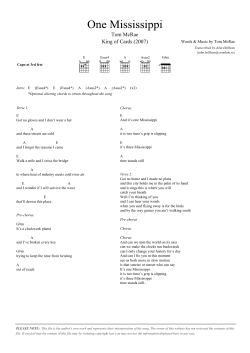
Cannon River Fact Sheet
photo credit to MnDNR Cannon River ENVIRONMENTAL SERVICES Cannon River is located south of the metropolitan area. It begins at FAST FACTS www.metrocouncil.org the Shields Lake outlet and runs through hills, forest and farmland before entering a broad gorge at the city of Cannon Falls. The Cannon River then flows east before entering the Mississippi River upstream of the city of Red Wing. The river is a state water trail, and the section from Faribault to the Mississippi River has been designated a Wild and Scenic River by the Minnesota Department of Natural Resources. The Cannon Valley Trail runs for 20 miles along the river between the cities of Cannon Falls and Red Wing, attracting 100,000 cyclists per year. Major river basin: Mississippi River Water source: Surface water runoff, lake outflow Length: 118 miles Watershed area: 1,470 square miles Watershed land use: Agriculture, forests and grasslands, some urban Flow Stream flow, or the rate of water flowing in a stream, affects aquatic life and the ecosystem. High flows can lead to flooding and erosion, and transport pollutants. Regional parks: Lake Byllesby, Miesville Ravine Cannon River flows year round and is influenced by how much rain or snow has fallen in any given year. Drain tile in agricultural fields may contribute to flash flooding and larger runoff events than generally observed in previous years. Cooperator organizations: Dakota County Soil and Water Conservation District Since 2003, the average flow in the Cannon River is a little more than 890 cubic feet-per-second. At that rate, it would take the Cannon River only seven hours to fill the Target Center in Minneapolis. Year first monitored: 1999 30 1,200 20 1,000 10 800 0 600 400 -10 200 -20 0 1999 2000 2001 2002 2003 2004 2005 2006 2007 2008 2009 2010 2011 2012 -30 Sediment Sediment from poorly-managed construction sites or eroded stream banks and gullies can decrease the light available in streams and harm aquatic life. Another term for sediment is “total suspended solids.” The Cannon River carries an average of 236 million pounds of sediment into the Mississippi River each year (enough to fill 7,133 15-ton dump trucks), and its sediment levels are the highest of all the streams in the Mississippi River basin. Nutrients Nutrients, like nitrogen and phosphorus, are necessary for stream health. However, elevated nutrient levels, caused by materials like fertilizers, animal manure, pet waste or grass clippings, can cause excessive algae growth and harm aquatic wildlife, insects and fish. Cannon River Watershed LE SUEUR GOODHUE RICE OLMSTED DODGE WASECA STEELE 40 1,400 Annual Precipitation, inches Average Flow Rate, cubic feet per second Precipitation BLUE EARTH Average Flow Rate 1,600 DAKOTA SCOTT W AB AS HA Cannon River Annual Flows and Precipitation 0 FARIBAULT FREEBORN 4 MOWER 8 16 Miles Median Sediment Concentrations in the Mississippi River and Tributary Streams, 2003–2012 Cannon River has the second highest concentration of nitrogen (measured as nitrate) and phosphorus of all the streams in the Mississippi River basin. Total Suspended Solids Concentration, milligram per liter 0 50 100 150 Mississippi River at Anoka South Fork Crow River Crow River Main Stem Rum River Chloride Chloride, one component of salt, is typically used for winter road, parking lot, and sidewalk maintenance and home water softening. Large-lot rural, residential areas also have many individual on-site septic systems to manage wastewater since there is no centralized sewage system. Failed septic systems can leak chloride into the groundwater and eventually pollute the stream. The Cannon River has significantly lower chloride levels than the other streams in the Mississippi River basin, which reflects the rural nature of the region. Bassett Creek Minnehaha Creek Mississippi River at St. Paul Preserving our Creeks The Dakota County Soil and Water Conservation District, North Cannon River Watershed Management Organization, and Cannon River Watershed Partnership are all actively working to maintain the watershed and to improve river water quality. They partner with private landowners, cities and townships, various government agencies and the University of Minnesota and St. Olaf College to complete various improvement projects, including: Battle Creek Fish Creek Vermillion River Cannon River Median Phosphorus Concentrations in the Mississippi River and Tributary Streams, 2003–2012 • Upgrading sewage treatment systems Phosphorus Concentration, milligram per liter 0 Mississippi River at Anoka South Fork Crow River Crow River Main Stem Rum River Bassett Creek Minnehaha Creek Mississippi River at St. Paul Battle Creek Fish Creek Vermillion River Cannon River 0.1 0.2 0.3 0.4 • Installing filter strips, grassed waterways and water and sediment control basins in farms throughout the watershed • Conducting watershed clean-up activities • Hosting rain garden and rain barrel workshops for residents Is the Stream Improving? Long-term data analysis and computer modeling indicate that the Cannon River’s water quality has improved because sediment and phosphorus concentrations have decreased. However, the river’s nitrate concentration has increased, causing degradation in water quality. And since the river’s nutrient, sediment and chloride levels are higher than the Mississippi River at Saint Paul, the Cannon River could potentially contribute to the degradation of the Mississippi River. Protecting the Region’s Water Resources This work supports the regional polices established in the Metropolitan Council’s Thrive MSP 2040 and Water Resources Policy Plan to collaborate with partners to promote the long-term sustainability and health of the region’s water resources, including surface water, wastewater and water supply. For more information About this fact sheet, contact Emily Resseger: emily.resseger@metc.state.mn.us, 651-602-1033 About stream monitoring, contact Leigh Harrod: leigh.harrod@metc.state.mn.us, 651-602-8085 Visit www.metrocouncil.org/streams for the full results of the Comprehensive Water Quality Assessment of Select Metropolitan Area Streams. www.metrocouncil.org Published 2014 Metropolitan Council 390 Robert Street North Saint Paul, MN 55101 Main: 651.602.1000 TTY: 651.291.0904 Public Information: 651.602.1500 public.info@metc.state.mn.us
© Copyright 2025











